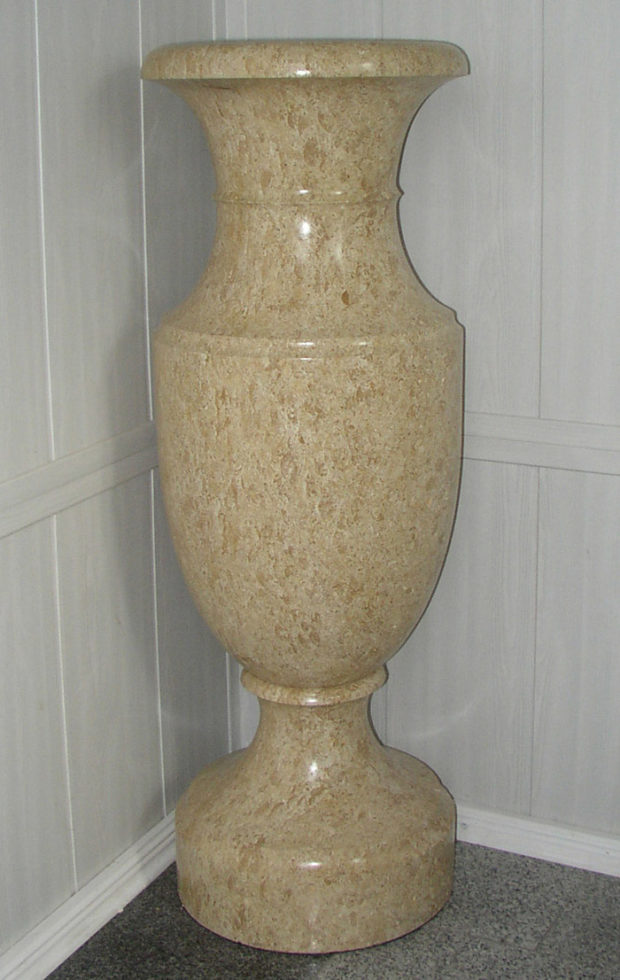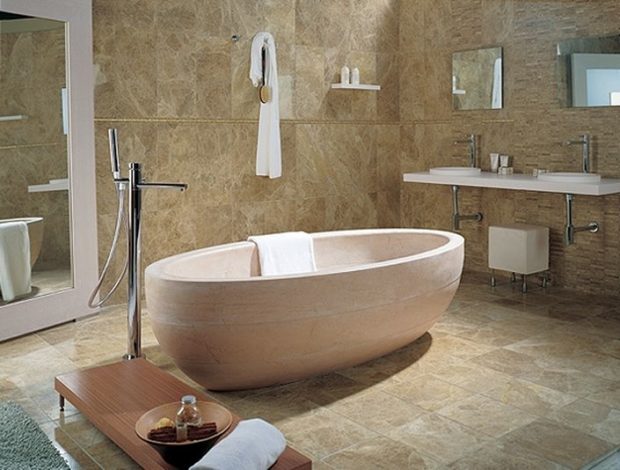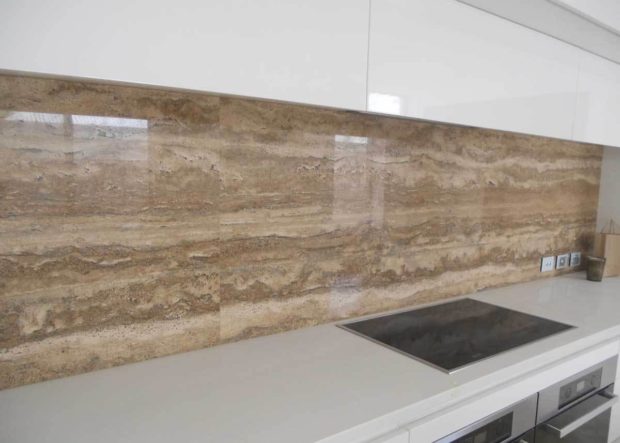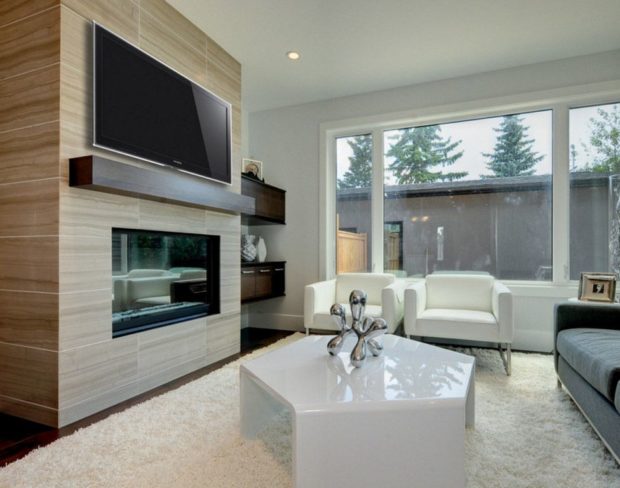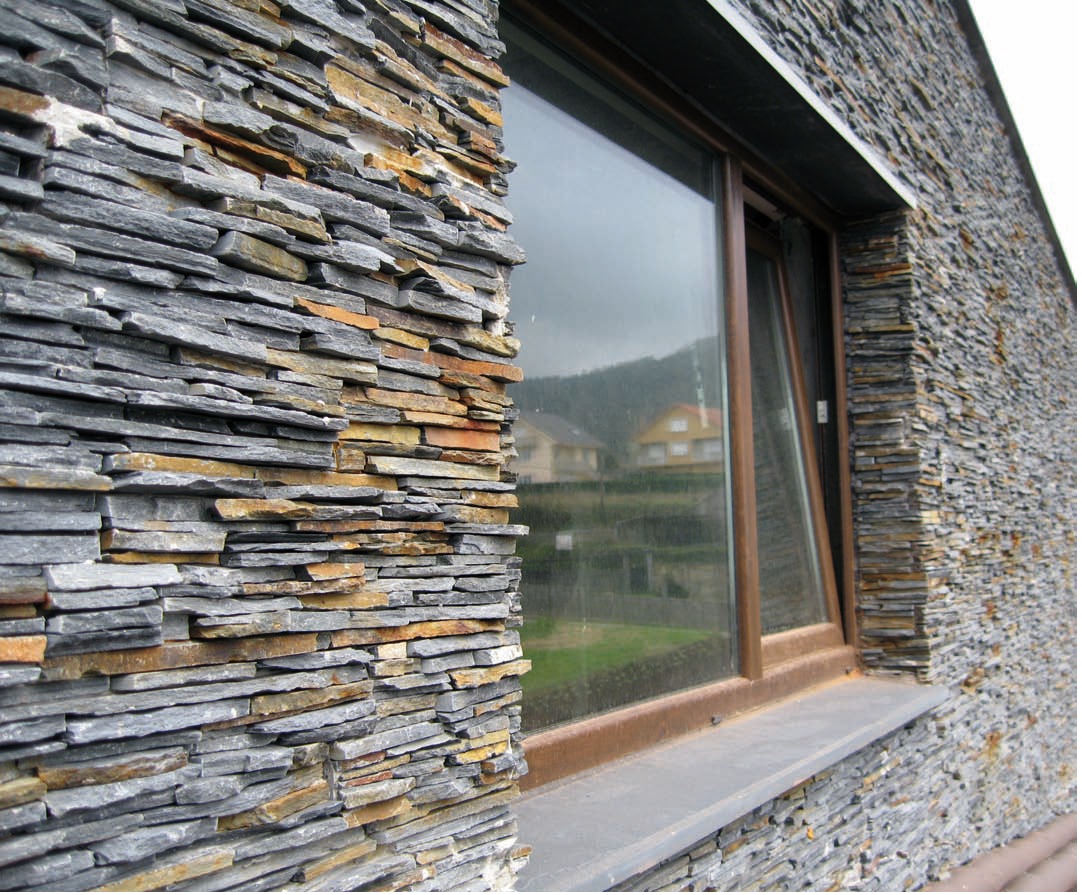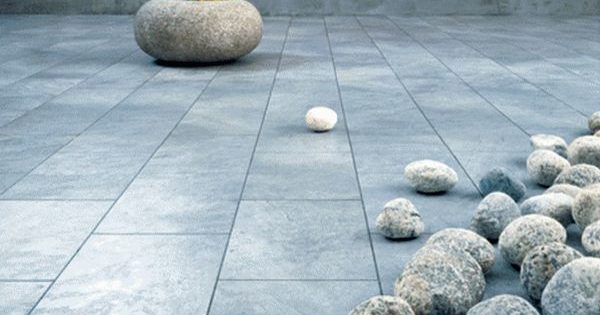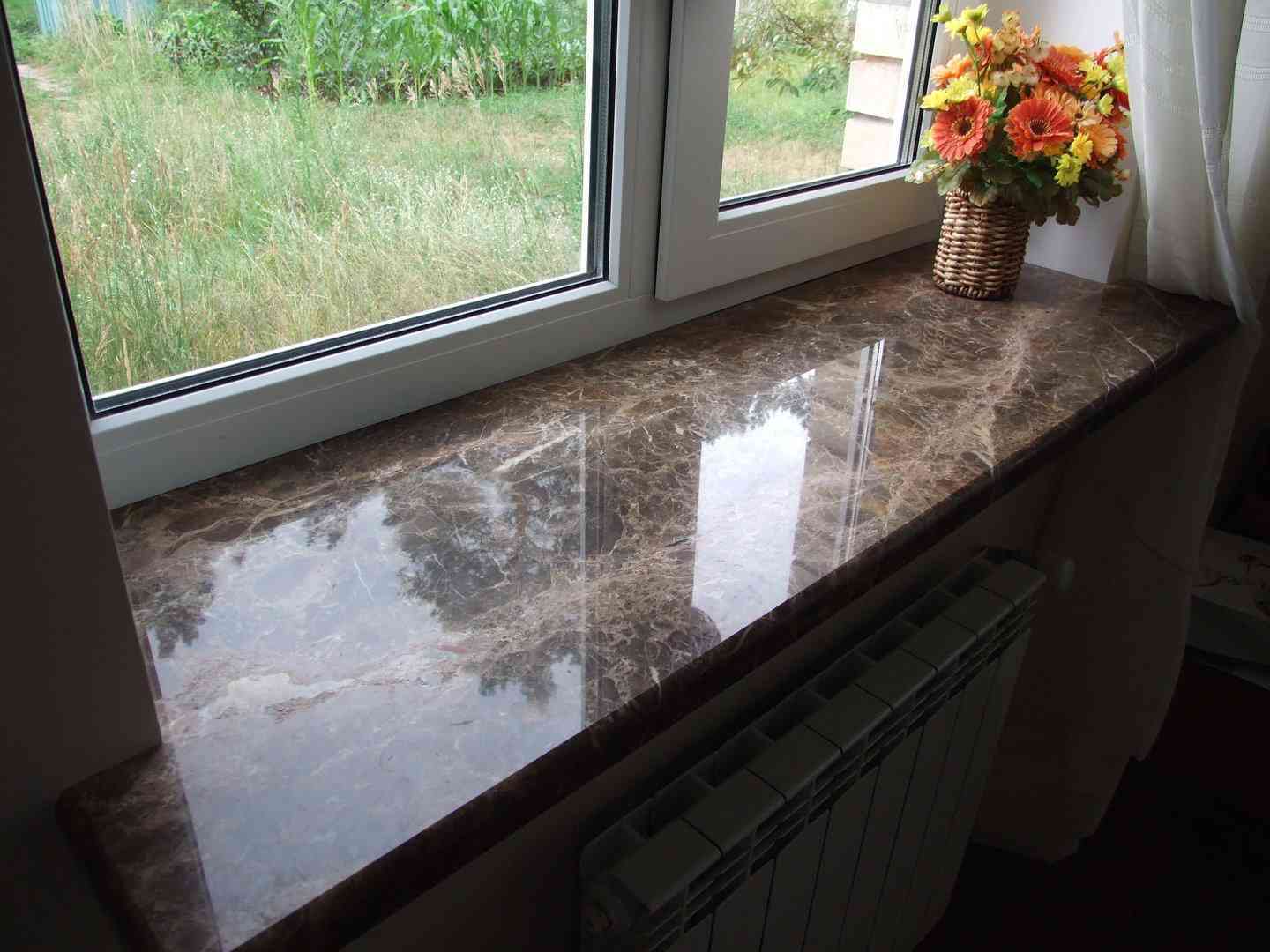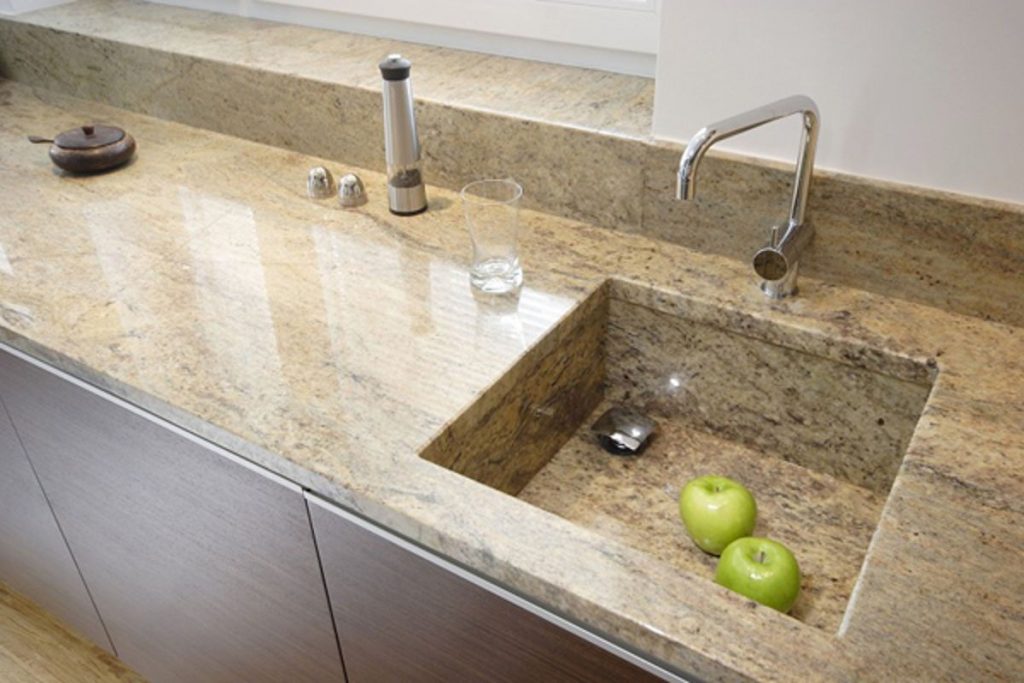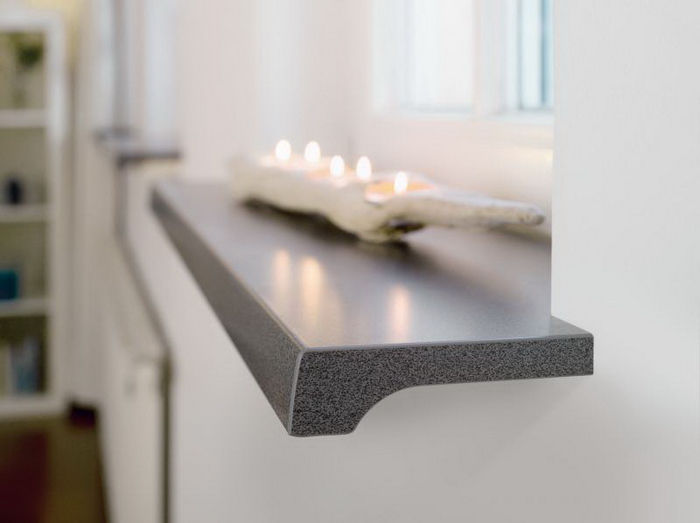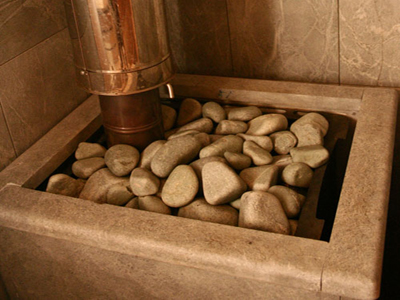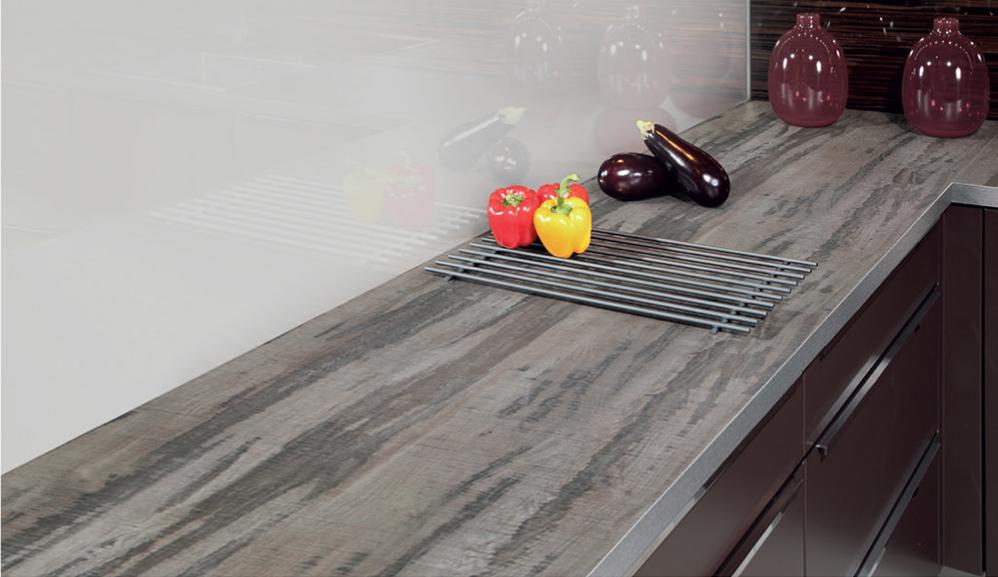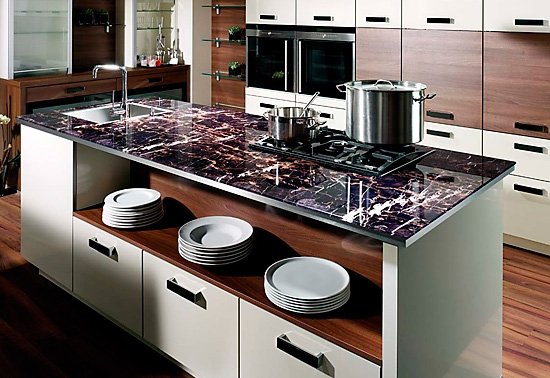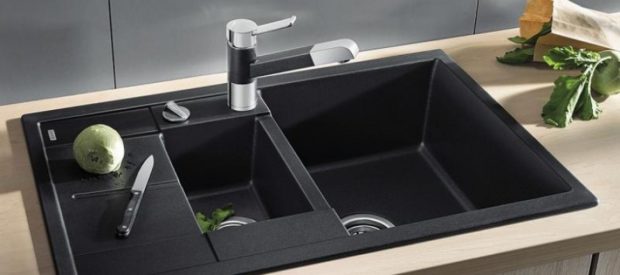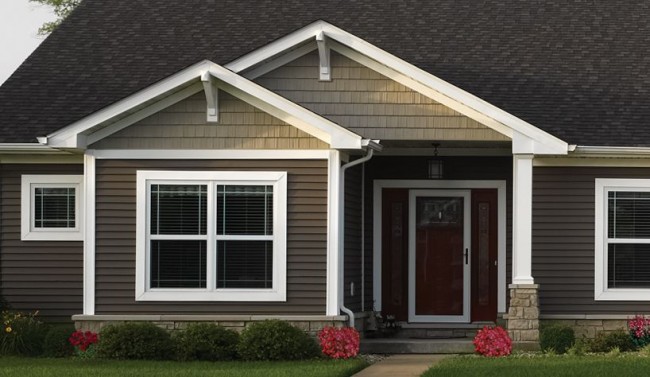TOP 11 travertine products for interior and exterior
Travertine was used in the construction of the majestic Coliseum in Rome, it was also used in the construction of St. Peter's Basilica in the Vatican. The new stadium in Krasnodar and several metro stations in St. Petersburg are decorated with this beautiful stone. It looks luxurious and at the same time strictly, can become an ornament of any home. From travertine make plates, countertops, steps, sinks, window sills and dozens of other things. Why is this stone so captivating, besides its unique appearance? We deal with its properties and study which travertine products are used in the interior and exterior of houses.
Travertine Properties
Travertine is something between limestone and marble, more precisely, it is an intermediate form of transformation of one into another. The stone, also called calcareous tuff, has a low hardness. Color - from white to yellow and gray with characteristic veins. Stones of a reddish, brown, and nut shade are much less common.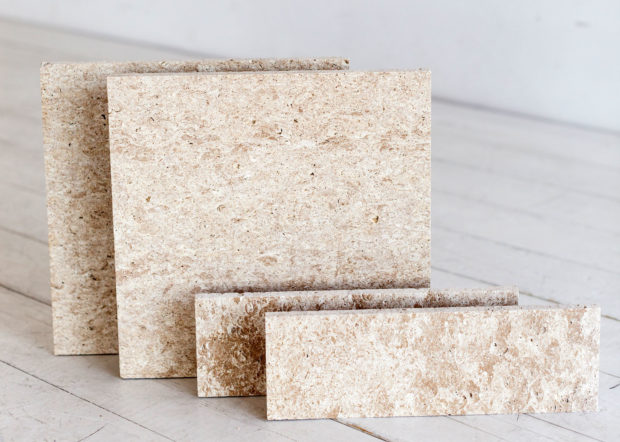
A lot of travertine lies in Italy, near Rome, where the most magnificent structure of this stone was built. There are also deposits in Turkey, Armenia, Germany, Azerbaijan, Kyrgyzstan and Tajikistan. In Russia, travertine is mined in Kamchatka, in the Pyatigorsk region, as well as in the Leningrad region.
Wild travertine, as a rule, is not used - the stone is polished and polished, which allows to obtain a more interesting surface. In addition, processed travertine is stronger than wild.
By the method of processing travertine happens:
- polished - has a slight roughness;
- polished - a surface with a characteristic sheen, the structure of the stone is visible best;
- brushed - a stone treated with special brushes, due to which the surface becomes slightly rough, acquires a kind of aged appearance;
- glazed - a stone with a smooth surface, the difference from polished is the lack of gloss;
- sawn - a stone with a noticeable relief;
- Buchured - a stone with a well-defined texture, this is usually used to decorate the facade.

Polished Travertine
Travertine is widely used in decoration, and all because of its many the benefits:
- chic appearance of the processed stone, the presence of different shades and processing methods;
- universality;
- durability;
- resistance to moisture, frost and temperature extremes;
- ease of processing;
- good heat and sound insulation qualities;
- relatively high strength;
- less weight compared to many other natural stones;
- the possibility of restoration.
Travertine is cheaper than many natural rocks, but has a loose structure, because of which it can easily absorb various substances. Especially the stone is afraid of acid, so orange juice or vinegar spilled on the countertop should be immediately wiped off. Travertine does not have the same strength as granite, it is much softer and more fragile, does not scratch the glass, but thanks to polishing it becomes stronger. If any individual tiles in the decoration are damaged, it can be easily replaced.
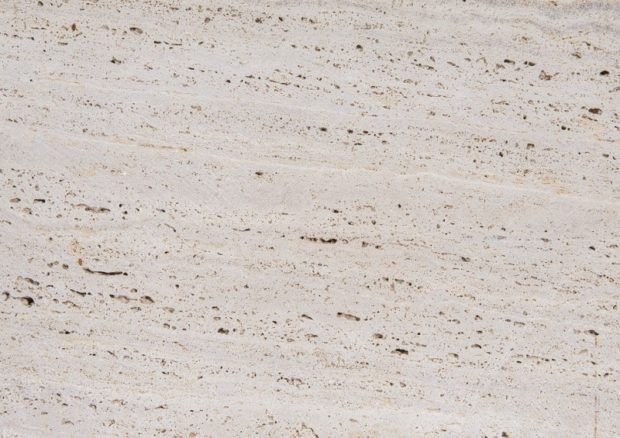
Sawn Travertine
Travertine has been used by people for many centuries for various purposes. It’s simpler to say that they DO NOT produce from it than to list all possible products. Travertine is produced in the format of tiles for facing walls, floors and facades; window sills, steps and countertops are created from it. All this and much more is offered by the Newlita company, which sells travertine stone since 2002 and carries out direct deliveries from Italy, Armenia, Kyrgyzstan and Turkey. The company has its own quarry for the extraction of travertine and a factory where tiles of various formats are made, slabs, and products from this stone are also created by order of customers. The supplier is confident in the high quality of travertine and gives it a 100-year warranty.
No. 1. Facade travertine
For facade cladding travertine boards from 30 * 30 cm to 60 * 120 cm are used. Also used slabs – large size plates up to 2 * 3 m, which allow you to make the lining with a minimum number of seams. A house completely finished with such material will look very chic, but no less elegant effect can be achieved if only the basement of the facade is lined with travertine. The stone is in perfect harmony with stuccoso that for a relatively small amount you can get a chic and sophisticated facade.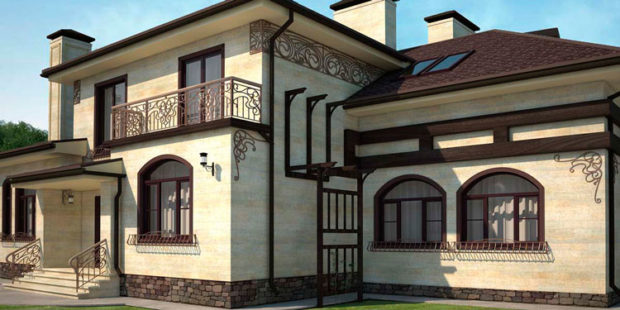
Travertine is not afraid of moisture, frost, it is lighter than marble, has a record durability, so investments in such material are quite justified. Moreover, over time, the stone changes slightly, but this does not spoil it. We can say that the “old age” is travertine.
In the decoration you can use other elements from travertine, for example, pilasters, balusters and other products in order to make the facade unique. You can add all this in steps and railings from the same stone, but you can successfully combine it with cheaper materials, for example, with tiles, porcelain stonewareclinker brick. No less interesting will be the facade, laid out in travertine of different colors. Let the main part be made of light stone, and one or several strips made of stone a little darker.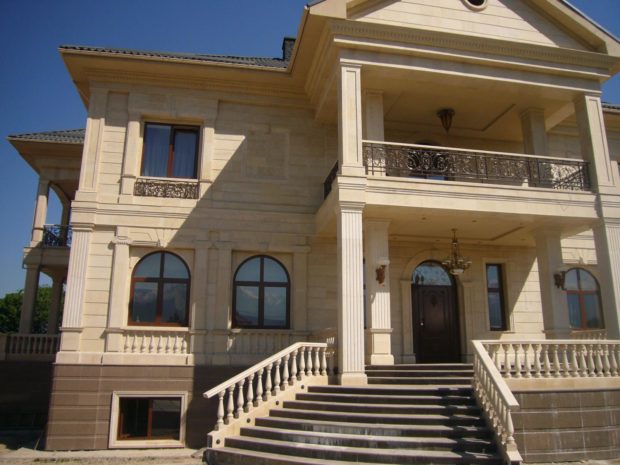
The installation of a travertine facade is carried out in one of the following ways:
- wet waywhen the stone is mounted on a pre-insulated wall on an adhesive mixture. To make the structure more durable, use a reinforced layer and additionally fix the plate with metal clips. Installation can only be carried out at a temperature of + 10 ... + 150FROM;
- ventilated facade method involves mounting travertine on a pre-equipped metal frame, i.e. between the facade and the finish, an air gap is obtained, due to which the thermal insulation of the house is increased. If necessary, you can use insulation material, then you can achieve the highest results in terms of heat conservation.
No maintenance of such a facade is required. Thanks to the processing of the material, the porosity of its outer surface is reduced, so it will not absorb dirt, however, after many years of operation, the facade can be washed with a jet of water under high pressure.
No. 2. Wall travertine
For interior decoration, stone is used in different processing methods - it all depends on the design idea. Note that polished travertine remains a universal solution, it looks great in both classic and modern interiors. The size of the tile can be different: from fairly large samples (30 * 30 cm, 60 * 60 cm, 30 * 60 cm) to the mosaic. Also, the walls can be faced with large slabs. In any case, the walls must be strong enough to withstand such a load.
Travertine tile will smash successfully in almost any room of the apartment:
- for a bathroom This is almost perfect. The material is not afraid of moisture, hygienic and durable.For small bathrooms, it is better to choose a tile with shine - due to the play of light and glare, the room will seem a little larger. If trimmed with travertine all walls and the floor, it will turn out to create the effect of a light stone cave - very stylish and beautiful. You can combine a stone with a different type of surface: embossed, matte, polished;

- in the kitchen travertine can be used for apron trimwill look great both tile and mosaic. You can, of course, finish all the walls, or select one wall in the dining area - this is the case when any solution will look great. Travertine can be combined with ceramic tiles or stucco, it looks good with painted surfaces and frescoed in sandy shades;

- part of the walls of the hallway can also be trimmed with travertine. Guests from the doorway will understand that they went into the house of a wealthy person who does not like banal decisions;

- in the living room the main thing is not to overdo it with a stone, so as not to get too cold and uncomfortable room. You can lay out only one wall or part of it, for example, an area around fireplace or TV;

- in the bedroom travertine is rarely used, but with a strong desire, you can lay it out niche or decorate the area above the head of the bed. The main thing is not to overdo it;
- best so grandiose finish looks in spacious halls private houses and non-residential buildings. Travertine is used in the decoration of banks, important government agencies, restaurants, hotels, etc.
Since the stone has a fairly high weight, the main thing is to prepare the surface well. The wall should be strong and strong, it is desirable to fix the reinforcing mesh. Travertine is placed on a special glue (ordinary cement-sand mixture may not withstand). Each slab or slab is best secured with a wire, under which a recess is created on the inside of the stone. To further protect the stone, after installation it is possible to apply water-repellent and antifungal impregnations on it. Such manipulation will not affect the appearance of the finish.
No. 3. Floor decoration
It's all about the same as with the walls. Tiles are available in different sizes and with different surface treatments. If the room has a source of water (kitchen, bathroom), then it is better not to take the polished version - it is very easy to slip on such a tile. Do not be afraid that unpolished stone will absorb moisture - manufacturers process the material with special adhesivesthat perfectly fill the pores of the product. It is better to take the most dense material, since there is an increased load on the floor.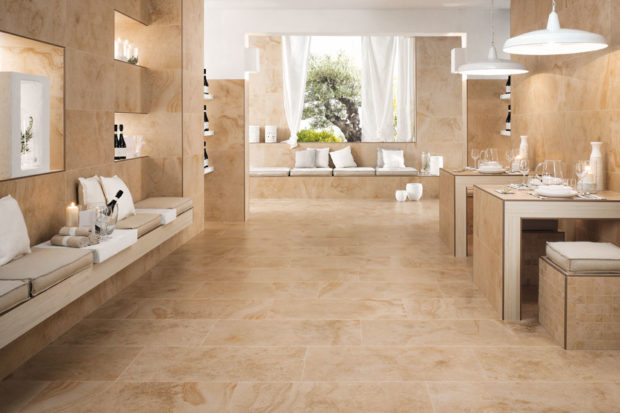
Travertine is suitable for rooms such as hallway, kitchen, bathroom. In the living room, he will look too cold and severe. Do not forget that tiles can be laid out not only in a strict order, like cells in a school notebook, but also in a checkerboard pattern, diagonally, and whole patterns can be formed from products of different sizes. An interesting effect can be achieved by combining travertine of a different shade and with a different type of surface. You can also experiment by combining stone with other materials.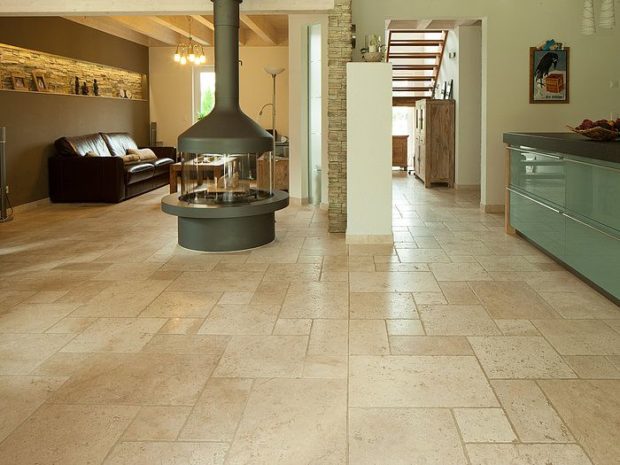
Number 4. Travertine worktop
For bathrooms and kitchens countertops from travertine. Typically, such things are custom made. Their ability to fit into both classic and modern interiors once again speaks of the universality of the material.
From travertine, you can create a sufficiently large monolithic countertop, and this is a big plus when it comes to surfaces that are constantly exposed to moisture and grease. Kitchen sink or bathroom sink can be made of metal or porcelain - the materials combine well. The option with a travertine sink will cost a little more. In this case, the countertop and sink will be a single design without seams - beautiful and practical.
Polished stone and processed unpolished are not afraid of moisture, but poor resistance to acids is preserved, so you will have to work on such a countertop carefully. If vinegar, juice or champagne spills, it is better to immediately wipe the puddle. A stone with a rough matte surface collects dust better than a smooth one, so it will require more thorough care.
Also travertine make tabletops for bar counters, dining tables and kitchen islands. If the budget allows, then all the horizontal surfaces in the kitchen can be made of this stone.
No. 5. Travertine sink
The travertine sink is in perfect harmony with the same countertop, but can be installed on a wooden countertop - this combination looks great in classic interior bathroom. In addition, the countertop can be made of tiles, porcelain stoneware or natural stone, but of a different breed. The ease of processing travertine allows you to create shells of any shape from it.
No. 6. Travertine window sill
Travertine is not afraid of direct sunlight and temperature changes, so it will be appropriate for the organization windowsill. It will look good both in the kitchen and in the bedroom, and due to the fact that travertine comes in different shades, you can always choose the most suitable option. Most often, window sills are made in polished execution, but if the interior requires it, you can install a matte product.
Such a window sill harmoniously looks with wooden windows. Plastic windows with a brown profile are also suitable, but ordinary white frames in some cases look good.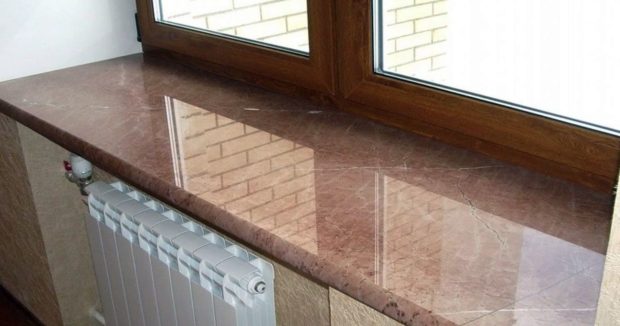
Number 7. Travertine shower tray
If travertine was already used in the decoration of the bathroom, then shower tray from the same material will look very appropriate. The shape of the product can be any. Manufacturers use rough stone to make pallets and additionally create a three-dimensional pattern on it to reduce the risk of falling.
You can also make a bath of stone, but such products are in very low demand.
Number 8. Travertine fireplace
Travertine is easy to process, so it is easy to get elegant elements for decorating fireplace portals from it. Pilasters, moldings, borders, elements of the base and ledge are made of stone, because the material well tolerates the long exposure to high temperatures. Such fireplaces look very impressive and expensive, can easily become the highlight of the living room.
No. 9. Travertine staircase
Tufa is used to create indoor and outdoor stairs. Due to its unique texture, travertine is a bit like a tree, so such steps will fit perfectly into the classical style and will look appropriate even in a wooden house.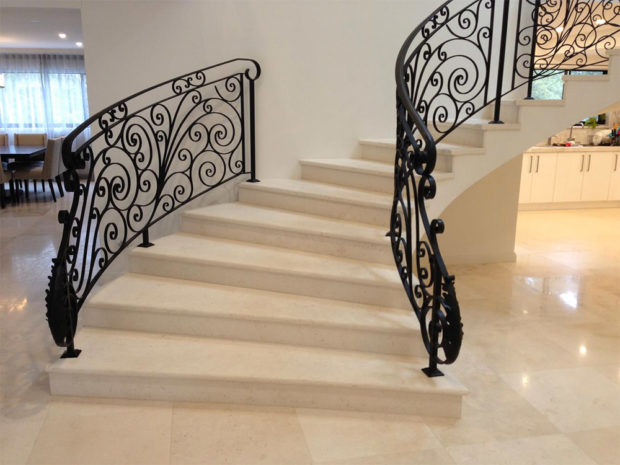
Since the stone is not afraid of frost and can withstand moisture, it can also be used to create outdoor stairs. Only dirt can negatively affect such steps, therefore it is better if the stone is already treated with special protective means. Otherwise, it is necessary to independently treat the surface with impregnations.
Travertine steps are in perfect harmony with the railing of wood and forged metal. To make the front door look even more pompous and elegant, handrails and balusters can be made from the same travertine.
No. 10. Travertine pavers
We note immediately, lay out the adjacent territory and track travertine is quite expensive, but such coverage will last a very long time. Look beautiful patio areaslaid out by stone. Also travertine can be used to decorate the site about basin. For such purposes, it is better to take a stone with a rough surface and special impregnation so that the dirt does not clog into the pores of the material. Of course, it is better not to finish the car site in this way.
If the adjoining territory of the mansion is large enough, and all (or part) of it is decorated with travertine, then if you have the means, you can supplement it with a fountain of the same stone. Typically, such fountains adorn central city parks, but if you have the means, then something similar can be realized on your site.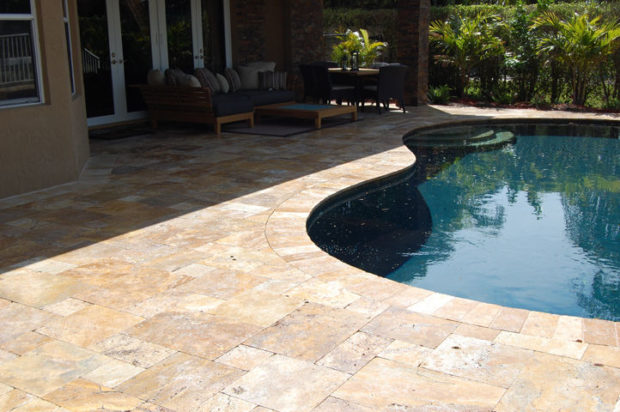
No. 11. Small decorative elements
To order, craftsmen can make anything. For example, the interior of the apartment can be decorated with a vase of travertine, a bowl, or statuette in the form of some kind of animal or Greek god. From travertine make candle holders, columns, plinths and other products for home decoration.